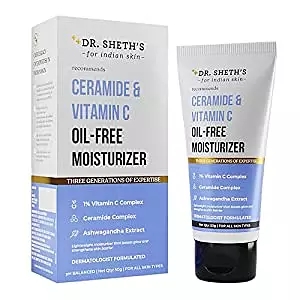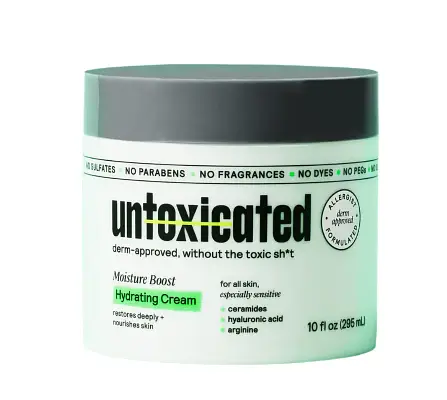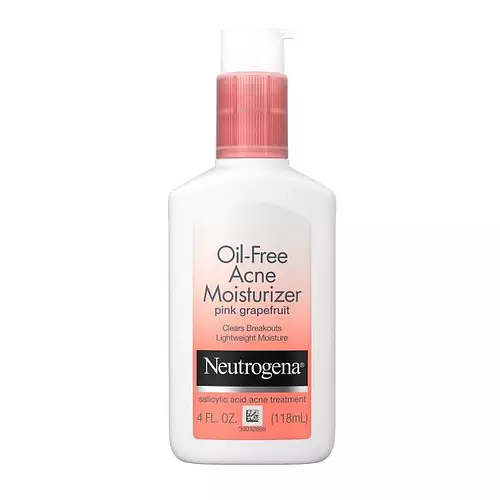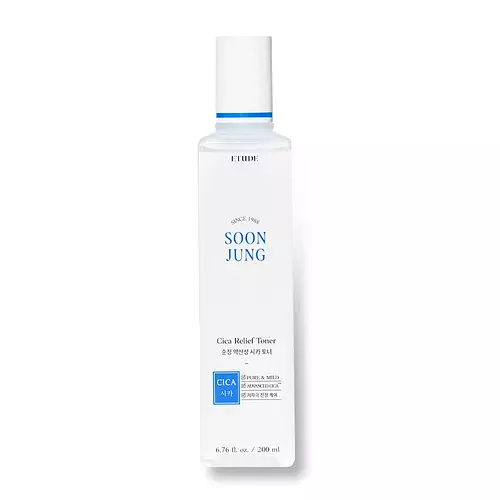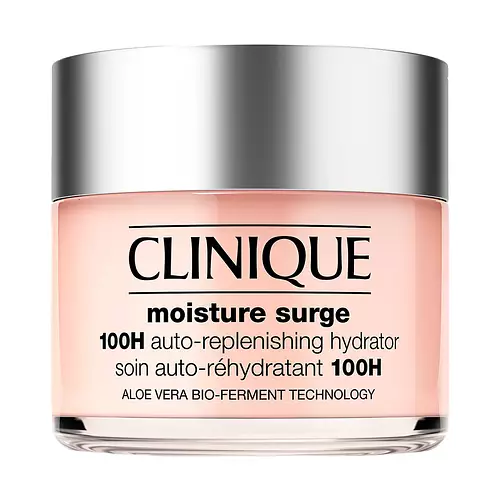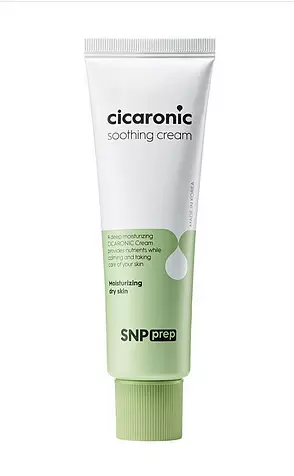Etude House Soon Jung 2x Barrier Intensive Cream Versus Dr. Sheth's Oil-Free Moisturizer - Ceramide & Vitamin C Brightening
Updated on July 02, 2024
Overview
What they are
These products are both reef safe general moisturizers. They have a total of 5 ingredients in common
Cool Features
They both contain Vitamin E
Suited For
They're both likely to be good for dry skin, brightening skin and sensitive skin
Free From
They both do not contain any harsh alcohols, common allergens, fragrances, parabens or sulfates
We independently verify ingredients, and our claims are backed by peer-reviewed research. Spot a product that needs an update? Let us know.
Ingredient Info
Etude House Soon Jung 2x Barrier Intensive Cream 21 ingredients
Dr. Sheth's Oil-Free Moisturizer 22 ingredients
At a glance
Click on any of the items below to learn more
Etude House Soon Jung 2x Barrier Intensive Cream 21 ingredients
Dr. Sheth's Oil-Free Moisturizer 22 ingredients
Notable Ingredients
This product contains 1 ingredient that may have this attribute:
Benefits
This product contains 1 ingredient that may have this attribute:
This product contains 2 ingredients that may have this attribute:
This product contains 1 ingredient that may have this attribute:
This product contains 1 ingredient that may have this attribute:
Concerns
This product contains 2 ingredients that may have this attribute:
This product contains 2 ingredients that may have this attribute:
Notable Ingredients
This product contains 1 ingredient that may have this attribute:
This product contains 1 ingredient that may have this attribute:
This product contains 5 ingredients that may have this attribute:
Benefits
This product contains 7 ingredients that may have this attribute:
This product contains 6 ingredients that may have this attribute:
This product contains 5 ingredients that may have this attribute:
This product contains 1 ingredient that may have this attribute:
This product contains 7 ingredients that may have this attribute:
This product contains 1 ingredient that may have this attribute:
This product contains 2 ingredients that may have this attribute:
This product contains 2 ingredients that may have this attribute:
Concerns
This product contains 1 ingredient that may have this attribute:
Ingredients Side-by-side
Ingredients Explained
These ingredients are found in both products.
Ingredients higher up in an ingredient list are typically present in a larger amount.
Caprylic/Capric Triglyceride is an emollient, solvent, and texture enhancer. It is considered a skin-softener by helping the skin prevent moisture loss.
Within a product, Caprylic Triglyceride can thicken the product and make spreadability easier by dissolving clumping compounds. An added benefit of Caprylic Triglyceride is its antioxidant properties.
Caprylic Triglyceride is made by combining glycerin with coconut oil, forming a clear liquid. Caprylic Triglyceride has not been found to be toxic for human use in concentrations under 50%.
While there is an assumption Caprylic Triglyceride can clog pores due to it being derived from coconut oil, there is no research supporting this.
Learn more about Caprylic/Capric TriglycerideEthylhexylglycerin (we can't pronounce this either) is commonly used as a preservative and skin softener. It is derived from glyceryl.
You might see Ethylhexylglycerin often paired with other preservatives such as phenoxyethanol. Ethylhexylglycerin has been found to increase the effectiveness of these other preservatives.
Disodium EDTA plays a role in making products more stable by aiding other preservatives.
It is a chelating agent, meaning it neutralizes metal ions that may be found in a product.
Disodium EDTA is a salt of edetic acid and is found to be safe in cosmetic ingredients.
Learn more about Disodium EDTALecithin is a term for a group of substances found in plants, animals, and humans. They are made up of mixture of fatty acids. These fatty acids usually are a mixture of phosphoric acid's choline ester connected to stearic, oleic, and palmitic acids. Most lecithins are created from plant ingredients scuh as sunflower.
Lecithin is an emollient. Emollients help soften the skin and creates a barrier to keep moisture in.
As an emulsifier, it also helps prevent water and oil ingredients from separating. Lecithin can help ingredients be better absorbed by the skin. The phospholipids in Lecithin can produce liposomes. Liposomes help other ingredients get through the skin barrier.
Learn more about LecithinTocopherol (also known as Vitamin E) is a common antioxidant used to help protect the skin from free-radicals and strengthen the skin barrier. It's also fat soluble - this means our skin is great at absorbing it.
Vitamin E also helps keep your natural skin lipids healthy. Your lipid skin barrier naturally consists of lipids, ceramides, and fatty acids. Vitamin E offers extra protection for your skin’s lipid barrier, keeping your skin healthy and nourished.
Another benefit is a bit of UV protection. Vitamin E helps reduce the damage caused by UVB rays. (It should not replace your sunscreen). Combining it with Vitamin C can decrease sunburned cells and hyperpigmentation after UV exposure.
You might have noticed Vitamin E + C often paired together. This is because it is great at stabilizing Vitamin C. Using the two together helps increase the effectiveness of both ingredients.
There are often claims that Vitamin E can reduce/prevent scarring, but these claims haven't been confirmed by scientific research.
Learn more about TocopherolIngredient Ratings
Here's what our community thinks of the ingredients in these products.
When to use
Etude House Soon Jung 2x Barrier Intensive Cream 21 ingredients
Dr. Sheth's Oil-Free Moisturizer 22 ingredients

Reviews
Here's what our community thinks
Etude House Soon Jung 2x Barrier Intensive Cream 21 ingredients
nathapate
Not so good for my skin type
This irritated my sensitive skin. it gave me a break-out (small comedones)
my skin barrier was not compromised at the...
Not so good for my skin type
This irritated my sensitive skin. it gave me a break-out (small comedones)
my skin barrier was not compromised at the time
bvechiato
Really irritating, itchy skin - but partner loves it
I haven't figured out which ingredient it in this caused the irritation but my non-sensitive...
Really irritating, itchy skin - but partner loves it
I haven't figured out which ingredient it in this caused the irritation but my non-sensitive skin partner (skin barrier made of steel, used CeraVe salicylic acid lotion everyday sometimes twice without any irritation) absolutely loves it and asked me to get him more of it. Go figure.
Dr. Sheth's Oil-Free Moisturizer 22 ingredients
YASHJ.SHETTY
GO FOR IT.
I usually dont write reviews but this product deserved it. It will work wonders on ur skin.Its great , in few days or weeks u will...
GO FOR IT.
I usually dont write reviews but this product deserved it. It will work wonders on ur skin.Its great , in few days or weeks u will notice how glowing and clear ur skin is rn

